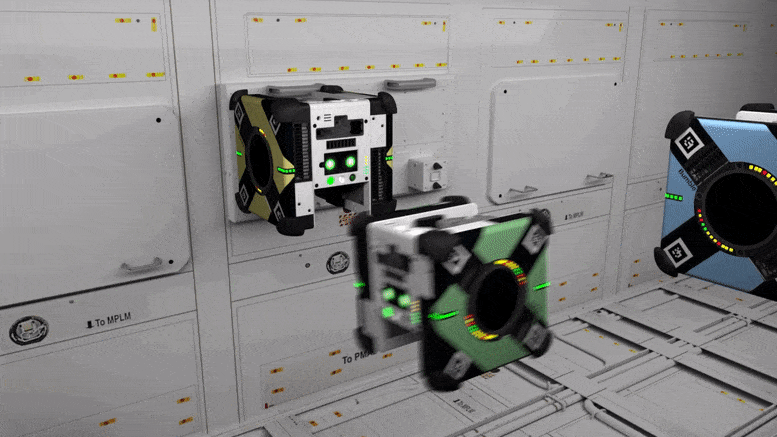
Animation of Astrobees on the International Space Station. Credit: NASA
Another round of safety training commenced on Wednesday, July 27, on the International Space Station. In addition to this, the Expedition 69 crew members embarked on various tasks including robotic activities, ultrasound scans, and station maintenance.
Astrobee Robotic Activities
Sultan Alneyadi, the Flight Engineer from the United Arab Emirates (UAE), began his day by powering on Astrobee, the station’s free-flying robots. Later, NASA astronaut Woody Hoburg engaged in a Zero Robotics dry run with Astrobee, located in the Japanese Experiment Module. Assisting ground teams with multiple software test runs, he helped verify various aspects and programming for the Zero Robotics student competition. This competition offers students the unique opportunity to write software controlling one of the three Astrobee robots, thereby inspiring future explorers, scientists, and engineers.
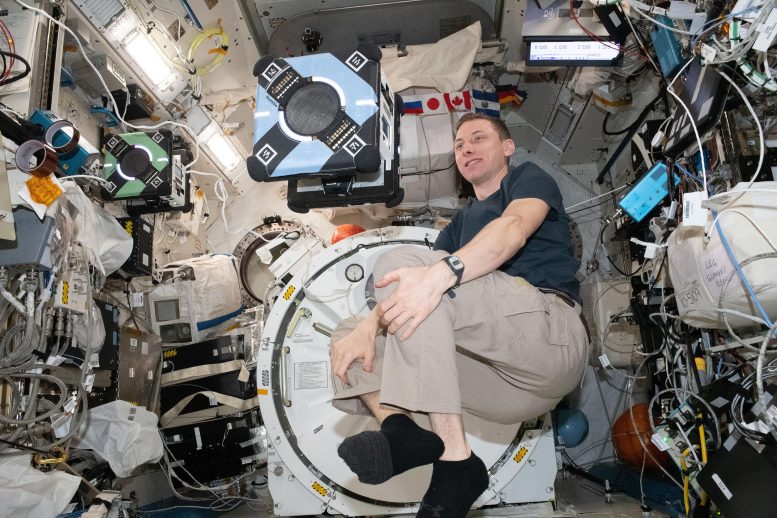
NASA astronaut and Expedition 69 Flight Engineer Woody Hoburg monitors an Astrobee robotic free-flyer in the Kibo laboratory module testing its operations in conjunction with mission controllers. The robotics work is being done to demonstrate ways to control the free-flyers using student-written code that recognizes multiple gestures. Credit: NASA
Preparations for Northrop Grumman’s Resupply Mission
Alneyadi was also tasked with consolidating food supplies as the crew prepared for the berthing of Northrop Grumman’s 19th commercial resupply mission. The launch is slated for Tuesday, August 1, with capture expected on Friday, August 4.
Health Measurements
Later in the afternoon, NASA astronaut Stephen Bowen, accompanied by Hoburg, undertook ISAFE measurements. In a microgravity environment, blood and fluids shift toward the head, potentially causing structural changes to the eye. The ISAFE device uses ultrasound to measure changes in the eye, brain, and blood vessels under microgravity. These measurements assist researchers in better predicting eye changes in future long-duration spaceflights.
Maintenance and Microscope Activities
The morning also saw NASA Flight Engineer Frank Rubio performing computer maintenance in the Japanese Experiment Module. He subsequently completed maintenance tasks on the Confocal Space Microscope. This tool, provided by the Japanese Aerospace Exploration Agency (JAXA), allows for the capture of fluorescent images of biological samples.
At the day’s end, Rubio was joined by Alneyadi, Hoburg, Bowen, and Roscosmos’ crew members, Commander Sergey Prokopyev and Flight Engineers Dmitri Petelin and Andrey Fedyaev. Together, they completed a second set of safety drills.
Prior to the training, Prokopyev undertook maintenance tasks in the Zvezda service module. Simultaneously, Fedyaev carried out inventory in the Functional Cargo Block, also known as the Zarya module, while Petelin conducted experiments studying liquid phases in microgravity.
ISS Communication Restoration
Mission Control Center Houston is back to normal operations after full communication with the International Space Station was restored on July 25, following a loss of power to the space station’s primary ground communication equipment at NASA’s Johnson Space Center.
The issue occurred during planned upgrades to the ground power system to ensure the mission control power grid remains robust and reliable. Ground teams activated the backup control center systems located at the agency’s Marshall Space Flight Center in Huntsville, Alabama, to regain communications with the space station while engineers addressed the power issue in Houston. The backup systems typically are used in events such as a hurricane when evacuation from Mission Control Center Houston may be necessary.
Flight controllers in Houston were able to stay in contact with the Expedition 69 crew aboard the space station through Roscosmos, as well as backup channels and the crew was not in any danger. All check-outs of the equipment went as planned following repowering.


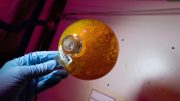
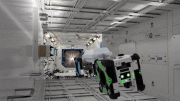


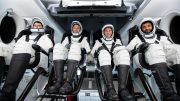
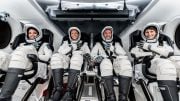
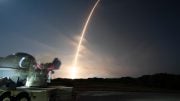
Be the first to comment on "Full Communications With Space Station Restored, Astrobee Free-Flying Robots Powered On"